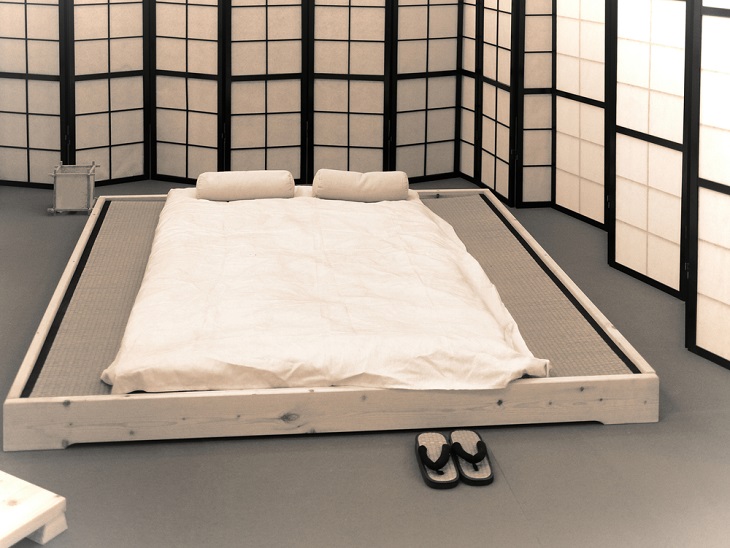
A futon is a term that refers to a traditional Japanese bedding system consisting of a cotton mattress and comforter laid out on a tatami floor. However, there is a difference between a western and a traditional Japanese futon.
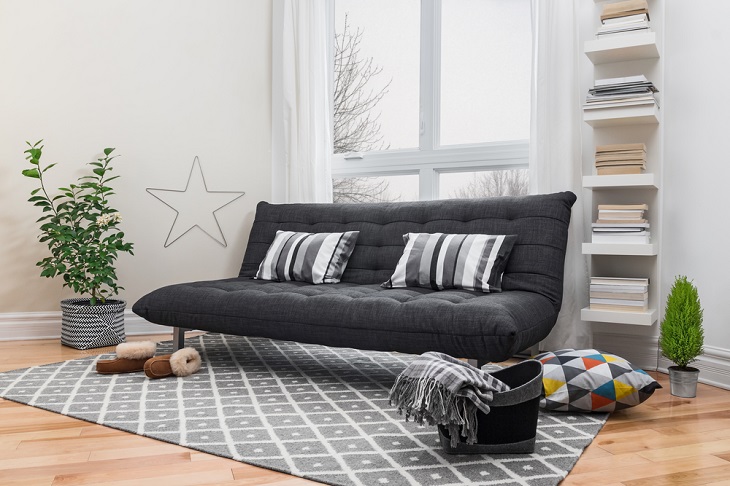
The western world discovered the Japanese futon bed during the second half of the twentieth century - mostly thanks to traveling and globalism. Westerners that slept in ryokans (traditional Japanese hotels) on futons tried to import the idea and remanufacture it in their home countries.
This resulted in a new type of futon that combined the natural Japanese style with the western inclination to maximum comfort. The western futon is much thicker than the traditional one; it is usually not placed on the floor, nor folded away during the daytime.
Some versions of the western futon have structured legs to hold them in place as a couch. That may appeal to the Japanese idea of a minimal, versatile living space, but these structured sofas could not be further away from a real futon!
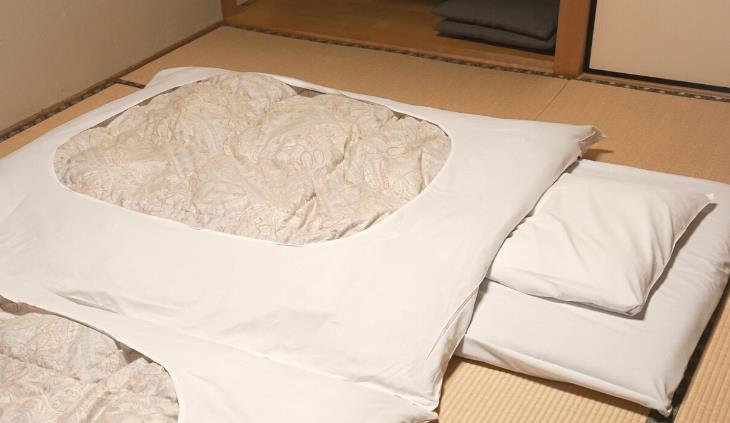
When the Japanese say "futon," they refer to the whole sleeping system consisting of two parts: the mattress, called "shikibuton," and the comforter, called "kakebuton."
Traditional futons are handmade entirely of cotton, including the filling. Watch the process in this video:
As you can see, the mattress is made of several layers of cotton, all held in place with quilting stitches. Futons are usually folded away in the morning and aired out in the sun to prevent mildew, microbes, and odors.
Traditional Japanese Flooring
Futons are often laid out on tatami floors - a soft type of flooring. These are straw mats traditionally made from rice straw packed tightly together in blocks. These either cover the entire floor or just the surface for a futon. Walking on a tatami feels like walking on a soft but supportive surface, slightly less stiff than a floor.
Futons are a great choice for environmentally conscious consumers - they have a longer life span than the average western mattress. They are also biodegradable, unlike synthetic foam mattresses that stay for centuries in landfills, releasing chemicals into the ecosystem.
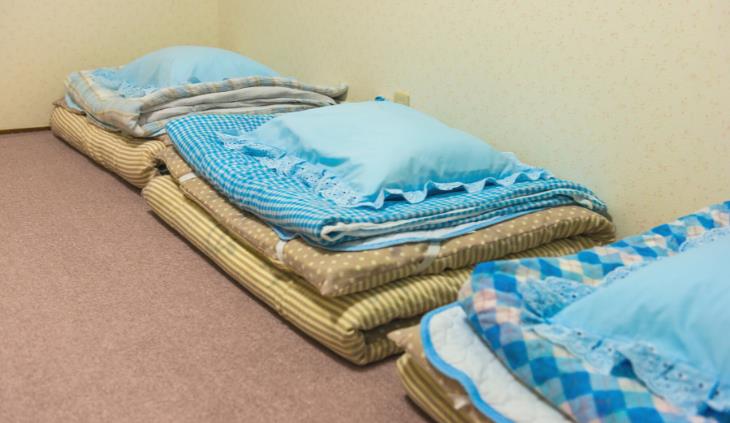 Futons folded away
Futons folded away Relief from back pain
While sleeping on a soft mattress may sound like the pampering we all deserve, it's important to draw the limit on that softness. The spine needs stable, evenly spread support throughout the night. The best mattress for you is the one that keeps your spine in a neutral position. This will also provide the most relief for back pain, as found in a study: "A mattress of medium firmness improves pain and disability among patients with chronic non-specific low-back pain."
If your mattress is too soft, the heaviest, curviest areas of your spine (namely, the upper and lower back curves) will sink into it, losing support. A futon provides comfort and cushioning, while the floor provides stable support.
Regenerative sleep
Optimal support allows for full-body, deep-tissue regenerative sleep via optimal blood flow. If your skeletal system is misaligned, that may impact blood flow, resulting in pain when you wake up (most commonly neck pain and lower back pain). Sounds familiar? Maybe it's time to reconsider buying a new mattress.
Chemical free
A 100% cotton futon is the healthiest option for clean, chemical-free living. Today, most mattresses are made with synthetic, potentially harmful chemicals that release slowly into the air and cause stress to the body's systems. In mattresses, these are usually products of the oil industry.
Western mattresses also tend to collect sweat and dust, whereas a futon only needs a vigorous shake and a day out in the open sun to be refreshed.
Active lifestyle
Sleeping on the floor means you must get up from it when you wake up. This promotes an active lifestyle as opposed to simply sliding off the high western bed. If you fold your futon away, that's even better.
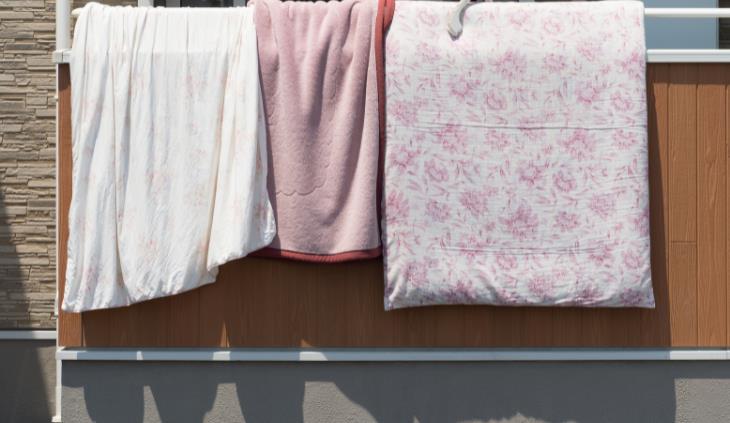 Futon and bedding aired out on a balcony
Futon and bedding aired out on a balconyModern history
Cotton has existed in Japan since the beginning of the 9th century, but its cultivation was difficult and slow. After several historical turning points, cotton was everywhere. One testimony to that is the emergence of sleeping attire. For a very long time, the norm in Japan was either to sleep in the nude or wear the same clothes you had on during the day. Starting from the 16th century and the successful cultivation of cotton, came the use of the Kaimaki futon - cotton sleeping attire in the shape of padded kimonos.
Along with the futon bed, these were a luxury reserved for few. Most people slept on what was called senbei futons - futons with so little cotton they weren't cushioned enough. Senbei is the Japanese term for rice crackers; the translation gives you a hint of just how stiff and unpleasant these early futon mattresses were.
Only in the 19th century did futon shops start opening up in Japan, marking their rise in popularity and availability. Cotton was no longer considered a luxury or a status symbol. Still, not every social-economic class could afford a futon.
